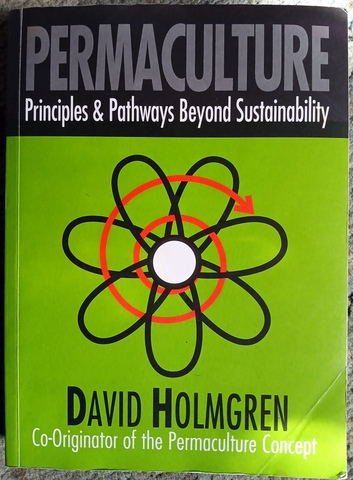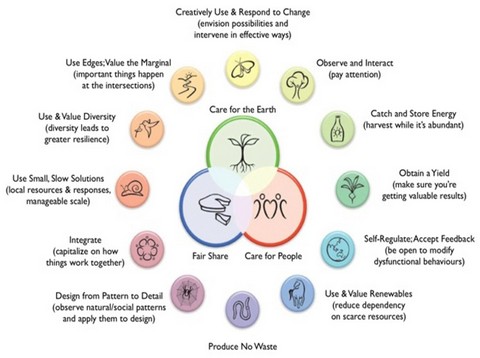Permaculture principles provide a framework and tools for developing sustainable designs that emphasize working with nature rather than against it. They are a series of principles that were developed by the co-originators of Permaculture: Bill Mollison and David Holmgren. Their principles were enumerated in their books, ‘Permaculture: A Designer's Manual’ and ‘Permaculture Principles & Pathways Beyond Sustainability’ respectively.

Since then many Permaculture leaders have developed their own sets of principles including Rosemary Morrow in ‘Earth Users Guide to Permaculture’; Jenny Allen in ‘Smart Permaculture Design’; Jessi Bloom & Dave Boehnlein in ‘Practical Permaculture’; Toby Hemenway in ‘City Permaculture’ and ‘Gaia’s Garden’; Aranya in ‘Permaculture Design’; Jono Neiger in ‘The Permaculture Promise’ and Robert Kourick in ‘Sustainable Food Gardens’.
Some of these principles have been a reframing or restatement of principles developed by Bill or David, whereas others are new ideas. Some permaculture writers, rather than develop their own, choose to refer to the twelve principles developed by David Holmgren in his book mentioned above, when the subject of permaculture principles comes up in their writings.
While reading his book, I found a quote by Aranya that seems applicable: “You’ll find many different versions of the principles on your travels. It’s not a matter of which ones are ‘right’, but rather which ones you’re finding useful in your life.”
When I was involved with teaching permaculture, either in the form of a Permaculture Design Course with my friend Danielle Wheeler, or in workshops conducted at the request of a number of local councils, the principles developed by David Holmgren were the ones we taught.
That is what this series of articles will be about, the twelve permaculture principles of David Holmgren because those have been the ones we at the Choko Tree found useful in our lives. The articles in the series will not be scholarly treatises about the subtle nuances of how the principles may be used in various circumstance, others far more skilled and experienced than I am have already done that. These articles will be a record of how we have interpreted and implemented them here at the Choko Tree.
To be clear, the principles to which I am referring are reproduced below –
4. Apply Self-Regulation and Accept Feedback
5. Use and Value Renewable Resources and Services
6. Produce No Waste
7. Design from Patterns to Details
8. Integrate Rather Than Segregate
9. Use Small and Slow Solutions
10. Use and Value Diversity
11. Use Edges and Value the Marginal
12. Creatively Use and Respond to Change
Thus the intention in writing these articles about the principles is to provide clarification, example and encouragement for those who are also walking the permaculture path, particularly in the suburban environment.



